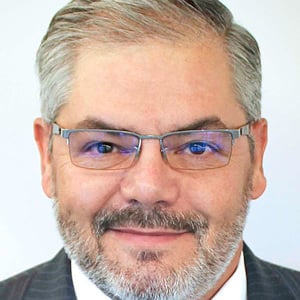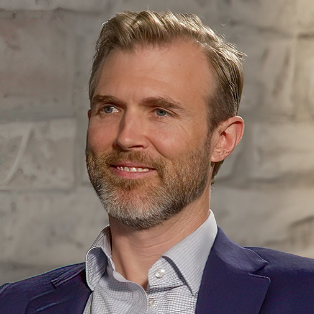Jul 01 2024 / Round the Table Magazine
Must-reads to be at your best
Topics Covered
Looking for ways to improve your skills and knowledge? Here are several books recommended by MDRT members to provide insight and guidance.
► Tiny Habits: The Small Changes That Change Everything by B.J. Fogg and Atomic Habits: An Easy & Proven Way to Build Good Habits & Break Bad Ones by James Clear share expert methods to quickly and easily build habits that will boost your productivity.
“I read these two outstanding books through my involvement with the MDRT Book Club. While full of great tips for everyone, I would highly recommend them for someone in a slump looking to accumulate improvements. As advisors, whether we’re in a slump or not, we need to build consistency into our lives. The bonus is when we build consistency in one part of our lives, it can’t help but improve other areas as well.”
—R.J. Kelly, AEP, MSFS, 44-year MDRT member, San Diego, California, USA
► Exactly What to Say: The Magic Words for Influence and Impact by Phil M. Jones
Questions and curiosity can help advisors lead a conversation and talk to the client’s subconscious, which plays a powerful role in decision-making. The book presents 22 “magic phrases” that can help you become more influential in your professional and personal lives such as, “How open-minded would you be?” and “Just imagine.”
“I have found that whether I’m writing an email or talking to someone, especially when I’m talking about scheduling meetings with people, I’m always saying, ‘How open are you to this?’ or ‘Are you open on this day?’ And every time now I catch myself, and I’ll either say or type, ‘How open-minded would you be to this?’ It’s such a subtle thing, but I think what it does in the other person’s subconscious is really significant. It started as this thing I just wanted to play around with and has now become part of my everyday vernacular.
“Another phrase that I took from the book is ‘Just imagine.’ I love how Jones sets it up. When we were kids, every one of our stories started with ‘Once upon a time,’ and it literally unlocks our brain and allows us to begin to see the words that are being read to us or what we’re reading. To think that it’s that simple that I can say, ‘Just imagine,’ and I turned on your brain. One part of our practice is consulting for a lot of businesses, and I’ll tell them ’Just imagine running your operation where you have more at the end next year than you did this year,’ and I can tell they’re looking at me, and they’re seeing their company differently as a result.”
—Brendan Clune Walsh, 13-year MDRT member, Detroit, Michigan, USA
► Mesa Para Una by Caro Saracho (Spanish-to-English translation: Table for One by Sharmila Bhushan) reflects on the humorous journey of a woman who chooses to be single and fulfilled in the modern world.
“‘Mesa Para Una’ shook me so much that I remember sending an Instagram direct message to the author thanking her. She kindly answered me, and it was the first time that I did not feel alone. I started working very hard, adopted good habits, moved away from outdated opinions, got to know myself better, and measured my successes in income, achievements, important decisions and personal growth. I learned new things and discovered that I had many questions I wanted to solve for myself and, surely, I was not the only one. In front of me was my purpose. I will be the best advisor for women. We don’t have to walk alone.”
—Andrea Lopez Villasenor, seven-year MDRT member, Guadalajara, Jalisco, Mexico
► The Power of Zero by David McKnight
Using simple math and given the fiscal reality of the U.S. federal budget, McKnight contends that taxes will increase in the future, and he documents strategies, like using Roth IRAs and life insurance, to minimize or eliminate taxes in retirement with the goal of achieving a zero percent tax bracket.
“The book shows the importance of trying to shift at least a good portion of your assets to tax-free types of assets because of how taxes could look in the future. I’ve been able to get some clients, including myself, to zero. I love the hybrid concept of using life insurance with the chronic illness rider. It’s a great way to really cover all the bases, and if you don’t use the long-term care insurance, the money is still there. I started working with a couple 10 years ago — they were in their early to mid-50s — and we implemented “The Power of Zero” concept. We established different buckets with tax-deferred, tax-free and taxable assets and implemented the concept of shifting some of those tax-deferred assets to tax-free assets, whether it’s a Roth IRA or cash-value life insurance. Non-direct loan recognition cash value and certain indexed universal life insurance policies are best suited for a retirement supplement option. Fast forward to today where the client is getting ready to retire with different buckets of money to pull from and much more in the tax-free bucket. Retirement is going to be highly advantageous for him. He has a nice pension, Social Security and some farm income, and because of those successes, their kids are starting to have children of their own and I’m now working with two of their five children.”
—Daniel Turnwald, IAR, LUTCF, 12-year MDRT member, Ottawa, Ohio, USA
► The Psychology of Money: Timeless Lessons on Wealth, Greed and Happiness by Morgan Housel is a book of short stories about the strange ways people behave when they deal with money.
“I’ve written a lot of articles for magazines. What I did during the recent market downturn was get ahead of the curve by writing articles about where the market was and not letting people panic. This book by Housel is one of the best books I’ve read that will teach your clients and help you write articles about what not to do when the market goes down.”
—Marc A. Silverman, CFP, ChFC, 40-year MDRT member, Miami, Florida, USA
► Leading at the Edge: Leadership Lessons from the Extraordinary Saga of Shackleton’s Antarctic Expedition, by Dennis N.T. Perkins, Margaret P. Holtman, Jillian Murphy, Paul R. Kessler and Catherine McCarthy, identifies 10 leadership principles Ernest Shackleton used to bring order to chaos and keep his crew of 27 polar explorers alive, together and home safely after being stranded for 20 months during a near-fatal Antarctic expedition with minimal shelter and resources.
“This book is easy to bite off. You can read a chapter and put it down, or you can read the whole thing. It’s not that long. The business books we tend to gravitate to are the ones about some kind of failure, but the Shackleton book goes through what leadership lessons are like when your life is on the line. Very few of us have faced what happens if you make a bad decision. The book was well-written about the facts of the Shackleton expedition getting stranded and how they dealt with it. You have people whose lives depended on every single person in there, and Shackleton was able to corral the expectations, keep his crew from going after each other when people were starting to break down and bring the team onto one initiative. The big initiative is, how do we get out of this mess, but then how do you translate that to all the other people on the team? Shackleton not only had the big mission, but he broke it down into day-by-day tasks and victories. Something as simple as getting a pail of water became a team celebration. He was able to take the big vision and refocus that. It’s like when our practices are doing well, the big vision is to add new clients and add new assets under management, but what we don’t realize is that for everybody on the team, it can be as simple as the daily repetition of going to get a pail of water and making it drinkable for everybody. What I loved about the book is it helped take that big vision and understand that it’s more important to get the water every day than it is to find a path to walk on to get to where you need to. It’s very applicable to business and leadership lessons along the way.”
—Brian D. Heckert, CLU, ChFC, 36-year MDRT member and MDRT Past President, Nashville, Illinois, USA
► The Checklist Manifesto by Atul Gawande
How simple checklists are used by pilots, in the medical field, to build skyscrapers and more help to avoid missing crucial details.
“‘The Checklist Manifesto’ really hit home because it showed that there are certain things you think you might not need the checklist for because you have to do them. Like you’re not going to miss getting a check from a client deposited. But now that’s one of our steps because there are all these other things that have to happen that might be easy to miss, like getting the receipt that we have to send to the client and things like that. So, we’ve been tweaking and massaging the financial planning workflows and have gone from an Excel spreadsheet that didn’t have every single task on it to having workflows built out in our CRM, where it literally has every single thing, like enter the amount of Social Security the client is going to receive at retirement, what age they’re going to retire and all these different pieces that we didn’t have before as steps. The reason we did it to that granularity was we can then have multiple people touching the same client without having duplication of effort.”
—Mark D. Olson, CFP, MSFS, 25-year MDRT member, Austin, Texas, USA











![Four essential things financial advisors in India should do to grow their skills [Deepak Agrawal]](https://members.preprod.mdrt.org/globalassets/digizuite/33706-en-india_written-interview_deepak_agarwal_thumbnails.png?height=268&width=268&mode=crop)

![The role of insurance in estate planning in India [Mathew P. Joseph]](https://members.preprod.mdrt.org/globalassets/digizuite/33576-en-india_written-interview_mathew-joseph_thumbnails.png?height=268&width=268&mode=crop)
